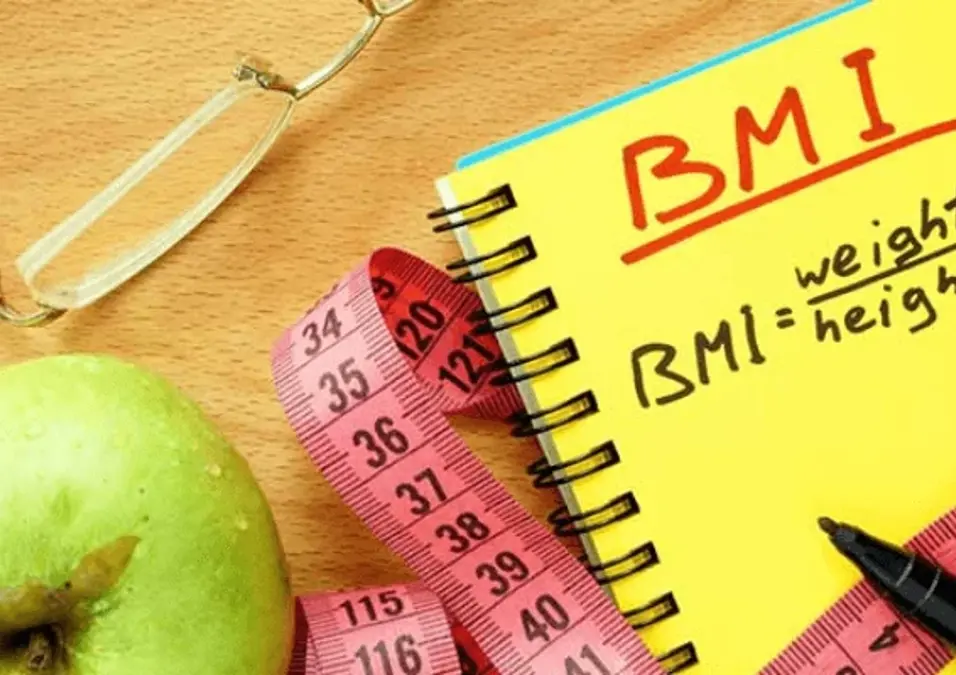How to calculate your BMI

SIGN UP FOR YOUR FREE DAY PASS TODAY!
The body mass index (BMI Calculator) is a measure that can roughly tell you how healthy your current weight is and is a key part of putting your fitness first! It uses several readings- most notably your gender, height, and weight, to calculate whether you are a healthy weight, overweight, or underweight.
A BMI calculator will divide an adult’s weight (in kilograms) by their height in meters squared to give you an accurate calculation of BMI.
This will give a number, usually between 15-40- that will show how healthy this person’s weight is. For those aged 2-18, a BMI calculator will also take their age and gender into account, incorporating it into the equation so you know how to calculate BMI correctly
BMI calculators work well as a rough and ready measure in those with standard musculature. However, they aren’t always appropriate for athletes or particularly muscular individuals.
It is relatively common to see a male bodybuilder with a body fat percentage in the low teens during the off-season clock in at BMI 30+ (technically obese, as we will see below).
Obviously, they will not be obese- their excess weight comes in the form of lean muscle, which is perfectly healthy and means they have definitely been making the most of their gym membership. More on this below.
But what do you do with these measurements? Well, hopefully, you will see if your current weight is healthy and you want to maintain it, or if your weight is slightly off and you need to gain or lose a few pounds. From here, you will need to come up with a diet plan to enable you to meet your goals.
One of the most important things to do when embarking on a training plan, trying a new fitness class, or a new diet is to calculate your caloric requirements. For this, we need to look at another measure: basal metabolic rate (BMR Calculator).
Your body burns through calories even at rest. Basic human functions like breathing, repairing muscle tissue, cell regeneration, and renewal and the processing of nutrients uses a tremendous amount of energy, just like CrossFit and HIIT Workouts will too! Your BMR is the amount of energy required to complete all of these functions. It will be based on your individual biometrics in much the same way that your BMI is.
As with your BMI, it’s easy enough to find a rough estimate of your BMR. Though actual amounts will vary according to person- there are too many variables to take into account to be completely accurate 100% of the time- a simple BMR calculator will be able to put you in the right ballpark.
Let’s dive into it and look at what BMI Calculator and BMR Calculator can do for you.
BMI Ranges
A healthy BMI is in the 18.5 to 24.9 range for the majority of adults with a normal musculature. The ranges measure in at:
- below 18.5: underweight
- between 18.5 and 24.9: healthy weight
- between 25 and 29.9: overweight
- between 30 and 39.9: obese
- over 40: severely obese
You will obviously want to keep your BMI between 18.5 and 24.9 to remain healthy, discounting any extra weight from lean muscle mass.
BMI Measurements and Accuracy
There are some great benefits to using the BMI formula as a measure of an individual’s weight and health. By working with weight against height, it largely, though simply, takes natural variations in peoples’ body shapes into account. The ranges are suitably broad, allowing a healthy weight range to further allow for this natural variation. BMI calculators are also very simple, meaning that anybody can access at least a rule-of-thumb to show, concretely, how healthy their weight is.
In giving a concrete reading that can be applied to the majority of people, BMI calculators give us some very useful data and will clearly tell somebody where they sit with regards to their health. Healthcare and fitness professionals can make judgment calls secure in the knowledge that they know the state of their patient or client’s weight.
Should we be using BMI?
However, as mentioned above, BMI calculation is a crude design. There are several factors that it misses out when trying to judge how overweight any individual person actually is. BMI readings do not always prove an accurate testament to their body fat levels.
Muscle is far denser than fat. As a result, very muscular people, such as bodybuilders and certain other athletes, may have healthy body fat levels, as mentioned above. However, they will still be classed as obese by their BMI measurements, which is obviously untrue. They will simply have extra weight in the form of muscle. Athletes and those with above-average levels of muscle mass should therefore be cautious when working out their BMI. A true body fat test using skinfold calipers or immersion would paint a far more reliable, accurate picture.
BMI should not be used as a measure of weight during pregnancy. If you’ve got a mini-human growing inside you, you should definitely be heavier than your height and body fat levels would suggest! In addition, and for obvious reasons, anybody with any physical abnormalities may want to avoid BMI tests. For example, anybody who has had a limb amputated, or who is missing a limb or portion thereof for any reason, will not get an accurate reading from a BMI calculator.
When in doubt, it’s best to seek expert advice from your healthcare provider if you are concerned about your weight.
The Take Home
BMI calculation provides a good rule of thumb for most people. If you have no physical abnormalities and do not have above-average musculature, it should work perfectly well for you. Definitely use it.
It will tell those who need to put weight on that they are underweight. In this way, it is of great use as an objective signal to those with eating disorders such as anorexia or bulimia that their bodies are undernourished. Likewise, it will signal to those over a BMI of 25 that they most likely need to lose some body fat, without too much room for argument or doubt. The power of possessing this knowledge cannot be underestimated.
Now that we know where we stand on weight, let’s have a look at how to use our BMR to structure an appropriate diet plan.
Calculating your Basal Metabolic Rate
As mentioned above, it’s simple to find your BMR based on your own unique biometrics. Though it’s not 100% accurate, much like BMI it will give you a good idea of how you need to proceed with structuring your diet plan.
The easiest way to find your BMR is with an online BMR Calculator. It will ask all relevant information before giving you a number in calories. Alternatively, you can do it yourself manually, using the same equation (the Harris-Benedict equation) as a BMR calculator.
The Harris-Benedict equation is as follows:
- For women: BMR = 655 + (9.6 × weight in kg) + (1.8 × height in cm) – (4.7 × age in years)
- For men: BMR = 66 + (13.7 × weight in kg) + (5 × height in cm) – (6.8 × age in years)
Why it's good to know your BMR
As with BMI, BMR will show you roughly what action you need to take to meet your weight goals: in this case, by showing you how many calories you should be eating on any given day. Once you know your BMR, any changes you want to bring about in your body become suddenly much more achievable.
Basically, you can use your BMR to aid in weight loss, gain, or maintenance, once you’ve used your BMI to judge what your goal needs to be.
Weight loss requires a caloric deficit and weight gain requires a caloric surplus. Knowing exactly how much food to eat to achieve any deficit, surplus, or even maintenance, requires knowing how much energy your body uses: your BMR.
How many calories your lifestyle demands
Your BMR only shows the calories you burn at rest- it assumes you do nothing but lie around all day. For a more accurate picture, you will need to multiply your BMR by your activity level to find out how many calories your lifestyle demands of you.
Doing this will make sure that your diet allows for the additional calories needed for day-to-day living, as well as for undertaking any kind of athletic endeavor, training and rebuilding muscle through hypertrophy.
To include the number of calories you burn during daily activities based on your lifestyle, use the following multiplications:
- Sedentary: If you get little or no exercise, multiply your BMR by 1.2.
- Lightly active: If you lightly exercise one to three days per week, multiply your BMR by 1.375.
- Moderately active: If you moderately exercise three to five days per week, multiply your BMR by 1.55.
- Very active: If you take part in hard exercise six to seven days per week, multiply your BMR by 1.725.
- Extra active: If you engage in very hard exercise six to seven days per week or have a physical job, multiply your BMR by 1.9.
The number you get is the number of daily calories you need in order to maintain your current weight. If your goal is to maintain your current weight, eat this amount. For weight loss or weight gain, deduct, or add calories as appropriate. Add 500 calories to the total to gain around 1lb per week or deduct 500 calories to lose roughly 1lb per week.
In this way, you can use a BMI Calculator to see whether you need to lose, gain or maintain weight, and you can then use a BMR calculator to make sure that you manage to do so.
GET YOUR FREE TRIAL TODAY
















































































